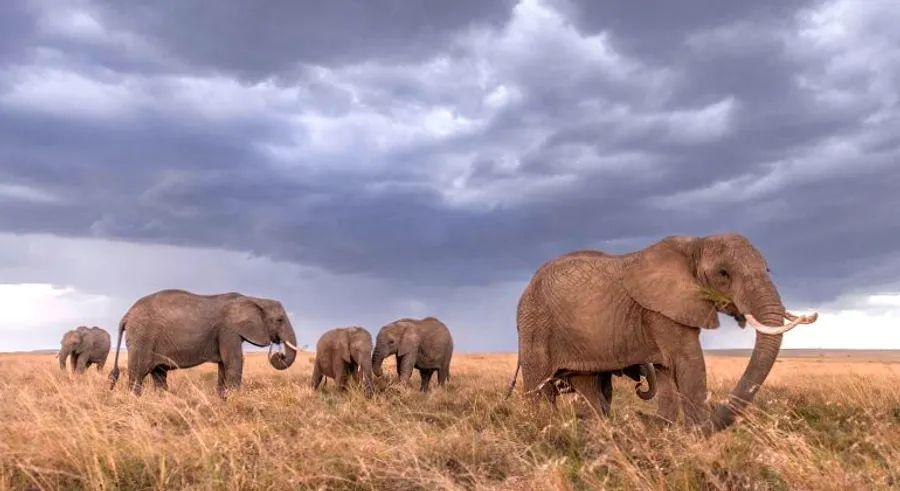‘I felt like the only visitor in Kenya’: How photographer Felix Rome captured the wildlife shots of a lifetime

Despite his last name, Felix Rome never had an interest in settling in a city. Born in Salisbury, England, he trained as a photographer and eventually secured his dream role – staff photographer for a collection of safari camps in East Africa.
Originally hired to travel between the properties of Governor’s Camp, Rome’s plans were upended by the coronavirus pandemic, forcing him to remain in Kenya.
While one of his duties was to accompany resort guests on their safari excursions and capture their experiences, Rome found himself virtually alone in the country. This created a unique opportunity to take close-up photos of wildlife, unbothered by the usual presence of tourists.
Rome arrived in Kenya in March with plans to stay in the Masai Mara National Reserve for three months before moving on to other properties. However, as travel restrictions grew amid the global pandemic, he ended up staying in the reserve much longer than anticipated.
The entire nation is currently under a curfew from 10 p.m. to 4 a.m., with masks mandatory in public spaces and large gatherings prohibited until further notice. International flights resumed in June.

The pandemic restrictions led to a dramatic decline in tourism at the Masai Mara, once a major bucket list destination, reducing visitor numbers to nearly zero.
'The absence of tourists played a huge role,' says Rome. 'I remember driving around for about five weeks without seeing a single other vehicle.'
This situation gave him the freedom to focus deeply on his craft without worrying about the volume of photos he was capturing each day.
For someone on a once-in-a-lifetime journey, the pressure to capture as many photos as possible is real. The more shots you take, the greater the chances of snagging a few great ones. But Rome's unique situation allows him to relax, take his time, and wait for that perfect shot.
Rome shares his routine: 'I usually wake up around 5:30 a.m., head out by 6:00 just before sunrise, and stay out until 9:00 or even 10:00 a.m. After that, I come back for breakfast, edit my photos, and write short updates about what I’ve observed.'
In addition to photography, Rome runs a YouTube channel where he shares his experiences. He also posts stories on both his personal and Governors' social media platforms. His photos feature in advertisements for the hospitality group, and he can sell prints on his website while retaining full ownership.
Rome has the rare luxury of spending eight to nine hours each day alone in the bush – no TV, no internet, no air conditioning, just him and his camera. It's not just about patiently waiting for the perfect shot; it’s also a chance to be alone with his thoughts.
One of his major endeavors has been capturing the lives of the Marsh Pride, a famous group of lions featured in the BBC's 'Big Cat Diary.' Though they may appear intimidating, lions – much like domestic cats – spend most of their day sleeping, making it essential to be patient in order to snap a captivating action shot.
'What I love about wildlife photography is that it allows you to forget everything else. You become so absorbed in the lion or elephant in front of you that for those moments, you almost feel like you’re part of their world. It’s a relief from the stress of bills and deadlines,' Rome says.

Once tourists are allowed to return, Rome will continue his role, sharing the responsibility with another photographer. Many guests request that Rome joins them on game drives and excursions, so they can immerse themselves in the experience while still having stunning photos to cherish afterward.
Both Kenya and Rwanda, home to the Governor's Camp properties, have once again welcomed a limited number of tourists by reopening their borders.
Wildlife Photography Tips

While you may not have access to the best equipment or endless hours to observe a lion pride, capturing stunning wildlife photos on your next adventure is absolutely achievable – whenever that may be.
Here are a few of Rome’s key tips:
– Make eye contact. Simply snapping a photo of an animal doesn’t make it extraordinary. What elevates a photo is when an animal locks eyes with the camera, creating a powerful connection in the image. According to Rome, it's the eyes that establish the depth of engagement in a shot.
– Avoid relying too heavily on the zoom lens. While close-ups are striking, they can also limit your perspective. Showing the surrounding environment in your shots can add context and originality, setting your photos apart from those taken at zoos or reserves. 'For example, we can capture a herd of buffalo with the escarpment in the background, and when you look at the image later, you can say, 'Yes, that's the scene we saw,' rather than just a generic portrait of a buffalo.'
– Don’t feel pressured to take photos every second. 'Capturing one great shot of a lion, for instance, will trigger the memories of all the other moments you spent watching them. That’s much more valuable than snapping thousands of pictures of a lion’s rear end as it rests in the grass or an elephant strolling away.'
Evaluation :
5/5



